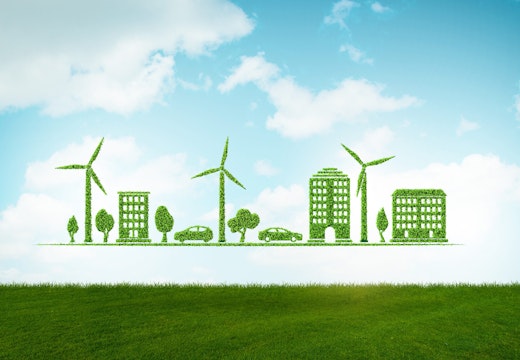Making smart sustainable: smart city ecosystem in a new urban age
The downfall of our urban centres during Covid-19 means that cities need practical solutions to make them more resilient and sustainable int eh future, according to Signify’s Eng Yong Liang
Before the pandemic hit, so-called ‘superstar cities’ were drawing in new talent and capital. In developing economies, the density and complexity of urban areas acted as powerful stimulants—and even as preconditions—for growth. China’s economic success, powered by its extensive population clusters, only added to the city’s prestige.
Then, the pandemic suddenly turned the urban density that had created such dynamism into a double-edged sword. And, as if that weren’t challenging enough, social unrest swept through cities around the world, exposing problems that have long gone unresolved.
If these experiences have taught us anything about the city, it’s that we shouldn’t take it for granted. Urban areas need practical solutions to make them more resilient and sustainable, and they need them now.
This is where the smart city comes in: a digital urban ecosystem embracing Internet of Things (IoT) technology and connecting multiple city systems. IoT tech’s data-gathering, analytical, and automation capabilities drive breakthroughs in urban management. The results are deep insights for city managers and planners, increased resilience, lower municipal costs, and a better quality of life for citizens in general.
Smart cities are better equipped to withstand the stresses to which urban areas are increasingly subjected. These stresses include climate change, rising sea levels, resource scarcity, and social inequality. Recent history has added public health crises, economic downturns, and other items to the list.
Using tech to build cities that last
What does a smart city platform look like? Effective solutions can be as different from one another as the cities they support, but many of them starts with connected street lighting.
Street lights are widely installed across cities, which makes them ideal candidates for deploying IoT tech. When a city deploys a connected solution like Interact City from Signify, the street lighting system does more than illuminate: it also functions as a ubiquitous, already electrified infrastructure on which a city can deploy different IoT tech. Such tech includes sensors, cameras, and radios for boosting in-city cellular coverage and delivering public broadband Internet.
When a connected street lighting system uses LED luminaires, cities can immediately realise significant reductions in energy usage, greenhouse gas emissions, and lighting-related costs—up to 70 per cent over conventional lighting. With IoT-based software lighting management, those savings can exceed 80 per cent, allowing cities to make important progress toward their sustainability goals while saving money. But energy efficiency is just the beginning.
Sensors installed in street lighting luminaires can indicate to the system when there are no people or vehicle activities in the street to dim the lights to maximize energy conservation. Air quality and noise sensors can monitor important aspects of the street environment, allowing city managers to take action on behalf of citizens who live near noise or pollution ‘hot spots,’ thereby improving the quality of life in the city.
Municipalities with ambitious and phased smart city initiatives must build their smart city platforms with adaptable and extensible solutions. Open APIs and developer partner programs, such as the Interact Developer Partner Program and its Interact Developer Portal, allow third-party developers and system integrators to share data and commands from the connected lighting system with other city systems.
Consider, for example, systems that support the work of law enforcement and health professionals. Noise sensors tuned to recognize gunshots can summon the police. Light levels can automatically be turned up when there is an incident at night so that first responders can have maximum visibility on the ground. Such capabilities promise to pay significant dividends in terms of citizen safety and well-being, a hallmark of a sustainable and resilient community.
Data sharing with other systems can also stimulate analytical breakthroughs by adjacent city stakeholders—breakthroughs that also make cities stronger. The air pollution data that a smart city platform gathers is crucial for a city’s environmental department, but local universities doing environmental research may also find uses for it, applying it toward their own goals. A smart city platform that is flexible and interoperable can also accommodate pilot projects and new initiatives that no one’s even thought of yet.
The smart city and social equity
Social equity is itself important to urban sustainability and resilience. The smart city can play a role in this sphere, too, mitigating the inequalities cities struggle with.
Take broadband Internet access, for example. With many workers operating from a remote-first or hybrid standpoint, it is critical for them to have good connectivity as a person without sufficient bandwidth might not be able to make a living.
A citywide connected smart lighting platform can help resolve such an inequity. By deploying smart poles with broadband access points throughout the city, the ‘broadband gap’ will start to narrow as a matter of sheer physical infrastructure. Connectivity will become an urban matter of fact regardless of the economic conditions in different neighbourhoods, much as the provision of running water is now.
The big urban rebuild
Great urban centres will bounce back from the current challenges that they face, as they have from even greater challenges in the past. The shake-up that the last few years has brought offers urban leaders an opportunity to rebuild in a way that makes their municipalities stronger than ever.
Smart city technology, with its powerful tools for improving urban resilience and sustainability, can play an important role in helping the city rebound from the social, environmental and wellbeing challenges of the last few years. It can also help city leaders understand why it makes sense to invest in building a smart city platform now, and for the future.








